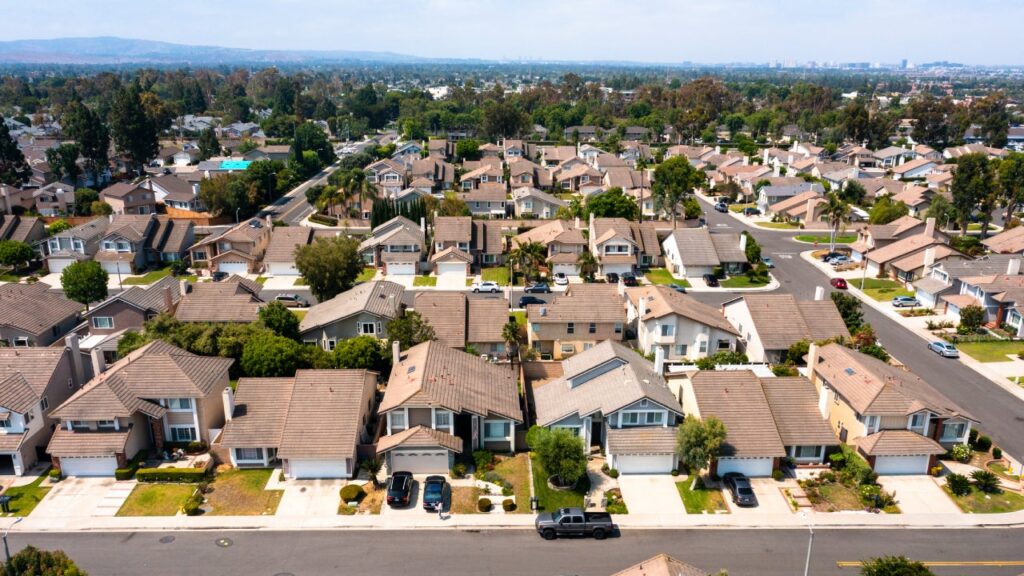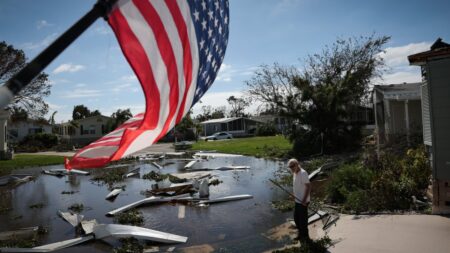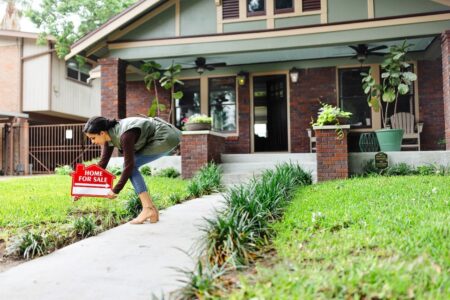It was a historic summer for California, with 2024 bringing the most severe wildfire season in 16 years. The Park Fire, which began in late July, has burned over 400,000 acres and blazed its way into history books as the fourth-largest wildfire in the state’s history. Meanwhile, Insurance Commissioner Ricardo Lara is attempting to put out a different sort of fire — the ongoing California home insurance crisis.
Beginning in late 2022, California’s biggest insurance companies slowly scaled back coverage availability. In response, Commissioner Lara introduced the Sustainable Insurance Strategy to expand access and restore stability in the California home insurance market. The strategy is the most extensive overhaul of the state’s insurance regulations in nearly 35 years. Bankrate’s insurance editorial team combed through the details to identify potential implications for homeowners across the Golden State.
What is the Sustainable Insurance Strategy?
First announced in September 2023, the Sustainable Insurance Strategy is a package of executive actions intended to stabilize the California home insurance market. Commissioner Lara’s strategy came on the heels of an executive order by Governor Gavin Newsom calling for “prompt regulatory action” to “improve the efficiency, speed and transparency of the rate approval process.”
“Sustainable” means more than one thing in this instance. The strategy aims to staunch a total market crisis, improve access to insurance and address the ongoing threat of climate change. To do so, the California Department of Insurance (CDI) is attacking the issue on multiple fronts. The long-term goal of the Sustainable Insurance Strategy is more affordable and accessible home insurance policies for Californians — but that can only happen if there are more insurance companies willing to write policies in the state. To get insurance companies to resume writing policies, a few things need to happen first.
Permit catastrophe modeling
Part of the strategy includes changing how insurers calculate rates. With catastrophe modeling, insurance companies could use predictive algorithms, new scientific research, historical data and computer simulations to better approximate the financial implications of a catastrophic disaster and price insurance rates accordingly.
Pre-Sustainable Insurance Strategy, insurance companies could only use historical data when setting home and wildfire insurance rates. As such, California home insurance rates can skyrocket in the wake of a natural disaster. This happens when widespread losses deplete an insurance company’s reserves, and an insurer raises premiums to account for those losses and restore financial stability.
Catastrophe modeling isn’t entirely new. California insurance companies currently use catastrophe modeling for earthquake and fire-after-earthquake losses — just not for wildfires. By giving carriers greater flexibility and, arguably, accuracy when pricing policies, the hope is that those carriers will resume writing new business in the state.
My Sustainable Insurance Strategy is intended to address decades-long neglected issues. Under outdated rules, the growth of climate-driven mega fires has supercharged insurance costs for many Californians while making insurance harder to find… We can no longer look solely to the past as a guide to the future. My strategy will help modernize our marketplace, restoring options for consumers while safeguarding the independent, transparent review of rate filings by Department of Insurance experts, which is a bedrock principle of California law.
— California Insurance Commissioner Ricardo Lara
Catastrophe modeling does not give insurance companies carte blanche to increase rates as high as they’d please based on “black box” computer algorithms. The California Department of Insurance states that it will closely monitor these models to ensure they adhere to California’s consumer protection laws. Plus, in order to begin using catastrophe modeling, insurers must agree to other provisions of the Sustainable Insurance Strategy — ones that exclusively call for greater insurance availability throughout the state.
This part of the strategy is already underway. Insurance Commissioner Lara recently announced that the CDI is forming a strategy group with Cal Poly Humboldt to create a public wildfire catastrophe model — a first for the state of California and the nation as a whole.
“A public model will be a benchmark for my department to help keep insurance rates fair and accurate, a reliable source of data for local governments increasing wildfire safety and a rich educational and career-building opportunity for students and researchers,” said Commissioner Lara in a statement. The strategy group will begin meeting in October 2024 and is scheduled to share their suggestions with the CDI by April 2025.
Potential impact on home insurance: More insurance companies writing policies in California and more predictable, stable home insurance rates
With catastrophe modeling, insurance companies may be able to better anticipate future losses and stabilize rates. However, it is still too early to tell exactly how homeowners across the state will be affected, as the Sustainable Insurance Strategy is still being rolled out. Rates may change, but whether they become cheaper or more expensive will depend on which insurers agree to return to the state and market competition.
Increase coverage availability to high-risk homeowners
Catastrophe modeling comes with some catches. In exchange for allowing insurance companies to implement catastrophe modeling for wildfires, they must agree to write a minimum of 85 percent of their new policies in historically underserved areas. The California Department of Insurance would ask this of the 12 largest home insurance companies in the state, which are:
- State Farm
- Farmers
- Berkshire Hathaway (which owns Geico)
- Allstate
- Auto Club (part of AAA)
- Travelers
- Liberty Mutual
- CSAA (also part of AAA)
- Mercury
- Chubb
- Progressive
- USAA
In addition to agreeing to write more home insurance policies where they’re needed, insurers must also agree to take Safer From Wildfire regulations into account when setting rates. These include measures like creating an ember-resistant barrier around your home, trimming trees and brush, placing noncombustible screens over attic vents and having double-pane windows. Essentially, homeowners who have taken steps to make their homes more fire-resistant should see that reflected in the price of their home insurance policies.
Potential impact on home insurance: More insurance companies writing policies in areas with high-risk wildfire areas
How this measure of the strategy will affect pricing remains to be seen. With catastrophe modeling, there is a chance that insurance rates will become more expensive at first. However, with more insurance companies working in a particular area, market competition could help bring premiums down to a more affordable level. Offering home insurance discounts for fire-hardened homes may also curb high home insurance rates.
Unburden the FAIR Plan
The California FAIR Plan is, in the words of the insurer’s president Victoria Roach, teetering on the edge. In a state legislative hearing in March, Roach stated, “If we have a major event, we’re going to look to the voluntary market — which is already in a precarious situation — to cover our losses.”
Remember, the FAIR Plan is state-created, but financially supported by California’s private insurance companies. So when the FAIR Plan receives a large influx of claims it cannot pay after exhausting its reserves, reinsurance and catastrophe bonds, its private supporters must help foot the bill. The last time the FAIR Plan defaulted to private supporters was after the 1994 Northridge Earthquake, which caused an estimated $32 billion in damage — the ninth most expensive natural disaster in history. Following the Northridge Earthquake, 93 percent of home insurance companies left the state and earthquake damage was removed as a covered policy peril.
The FAIR Plan hasn’t had to turn to private companies since, not even in the aftermath of the 2018 Camp Fire. But, the FAIR Plan is still in dire straits. When speaking to the San Francisco Chronicle in June, Roach disclosed that the plan has around $385 million in reserve — nowhere near the $393 billion it has in exposure.
The FAIR Plan can call on private insurance companies for financial aid if it cannot afford to pay out claims on its own. If that happens, private insurance companies are stuck paying those losses. The Sustainable Insurance Strategy aims to change this. Under the new regulations, insurance companies can only pay half (up to $2 billion — $1 billion for residential claims and $1 billion for commercial claims) in FAIR Plan losses. The other half would be recovered from California home insurance policyholders with the insurance commissioner’s approval. But, homeowners wouldn’t be charged for any commercial FAIR Plan losses.
Potential impact on home insurance: Could negatively impact home insurance premiums
Granted, this is planning for a big “what if.” So far, the FAIR Plan has not needed to make a cash call to the private insurance companies that support it. However, this provision of the strategy is definitely one that’s more for the insurance companies than it is for California homeowners.
“The whole idea of the original assessment formula is that the participating insurers, not consumers, pitch in to cover shortfalls,” says Amy Bach, executive director of United Policyholders, a consumer-focused advocacy group. “But we understand that [insurance companies’] FAIR Plan obligations are yet another driver of insurers’ reduced underwriting in California and why that part of the Sustainable Insurance Strategy is being negotiated. We would prefer to let the Complete Rate Filing piece and the CAT model piece and 85 percent increased writing in distressed areas pieces get implemented before further reforms.”
Modernize the FAIR Plan
One of the key points of the Sustainable Insurance Strategy is to improve the FAIR Plan — not eliminate it. As long as there are ultra-high-risk properties in California, there is a need for a FAIR Plan. The Sustainable Insurance Strategy aims to raise commercial coverage limits from $20 million per structure to $20 million per structure and $100 million per location, mainly to support condo owners.
Increasing the FAIR Plan limits is a patch, not a solution. There is a tension between continuing to increase the Fair Plan’s exposures (which in turn increases admitted insurers’ exposure, particularly in areas they’ve stopped voluntarily writing) when you’re trying to get them back into the voluntary market. But we don’t have a whole lot of options right now. The non-admitted carriers’ rates are not regulated so pricing can be brutal, especially for condos.
— Amy Bach, executive director of United Policyholders
Potential impact on home insurance: More regulated rates for condo owners
Before resorting to the FAIR Plan, many homeowners looking for coverage may turn to a surplus line insurer. While completely legal, these insurers are not beholden to the same rules and regulations as regular, admitted insurance companies — particularly when it comes to pricing. Surplus line insurers can charge policyholders rates significantly above average, but some homeowners may not have another choice if they can’t find a policy in the standard market. The idea is that condo owners with limited insurance options can go to the FAIR Plan, where rates are more regulated, versus relying on the unregulated (and sometimes, unaffordable) surplus line market.
Expedite rate approval process
Like other states, California operates under a “prior approval” system for insurance rate filings. Meaning, before a rate change (an increase or a decrease) is applied to homeowners’ premiums, the California Department of Insurance must first give that company the okay. Under Proposition 103, insurers have the right to a speedy rate approval process — but the reality looks different.
Proposition 103 states that, if the CDI has not taken any action within 180 days of an insurance rate filing, then that filing is approved. But, the CDI usually requests that insurance companies waive their right to a fast rate approval. If not, the CDI can either approve the filing or hold a public hearing. The 180-day timeline is usually not long enough for the CDI to fully review a rate filing, so it almost always chooses to go to a hearing — which can take a year, at minimum.
To avoid getting stuck in this year-or-longer bureaucratic limbo, most insurance companies choose to waive their Prop 103 rights. Yet, the end result isn’t much faster. On average, it takes 236 days for a home insurance rate filing to be approved in California, making the Golden State the 49th slowest state in terms of rate approvals. Colorado is the slowest, at 444 days.
The system is too slow, so the Sustainable Insurance Strategy aims to speed it up. Ideally, insurance rates charged to homeowners accurately reflect both the property’s risk and the costs shouldered by insurance companies. If rates can’t keep up with either of these metrics, it may encourage insurers to pause business in California.
Potential impact on home insurance: Faster rate approvals for California home insurance companies
To expedite the rate approval process, the CDI is in the process of creating a data reconciliation tool. The tool acts as a checklist for insurance companies, ensuring that they provide all of the information needed for a rate change filing up front, eliminating some of the back-and-forth. Faster rate fillings are something insurance companies have been asking for. Like catastrophe modeling, it could coax insurance companies back to California.
We’ve been working closely with the Insurance Commissioner and fully support these actions to modernize the rate application processes, consistent with the timelines outlined in Prop 103. It’s part of the state’s larger package of solutions to ensure Californians have adequate access to insurance and combat market exodus that hurts consumers. These are the actions necessary to address California’s insurance crisis.
— California Gov. Gavin Newsom
What’s next for California homeowners?
The Sustainable Insurance Strategy is scheduled to be fully implemented by December 2024 — an ambitious goal, considering insurance is a slow-moving industry. Although much of the strategy is still just regulatory text, it has piqued the interest of insurance giants Allstate and State Farm.
The first two companies to exit the California home insurance market, it’s possible they could be among the first to return. State Farm filed for an average 30 percent rate increase in late June 2024. Allstate filed for a 39.6 percent increase in January but was approved for a 34 percent average. Allstate policyholders should see those newer rates go into effect in November 2024.
When will the break come for California homeowners? In an interview with Fox News, Deputy Insurance Commissioner Micheal Soller says that relief could come to homeowners by early 2025. Although higher rates probably aren’t what California homeowners want, they are what the insurance companies need in order to write new policies in the state. And right now, the California Department of Insurance is stuck between a rock and a hard place in incentivizing insurers to write new business and not placing too much of a financial burden on homeowners.
What to do if you can’t find insurance coverage in California
Even in a tight insurance market, there are still some things you can do to secure a home insurance policy.
- Cast a wide net. If you only stick to recognizable, brand-name insurance companies, you could be limiting your options. There are still many insurance companies operating in California, and getting quotes from companies you may be less familiar with could help you find the right one.
- Contact a broker — maybe one in a different city. If you’re a Los Angeles homeowner trying to find a policy, try calling a broker in Sacramento (or vice versa). Brokers in other cities may be more familiar with different regional carriers and could help you secure a policy.
- Contact the California Department of Insurance. If you’ve been dropped by your provider and are struggling to find another option, CDI’s Home Insurance Finder may be a useful tool in identifying insurance companies willing to serve you.
Read the full article here
















